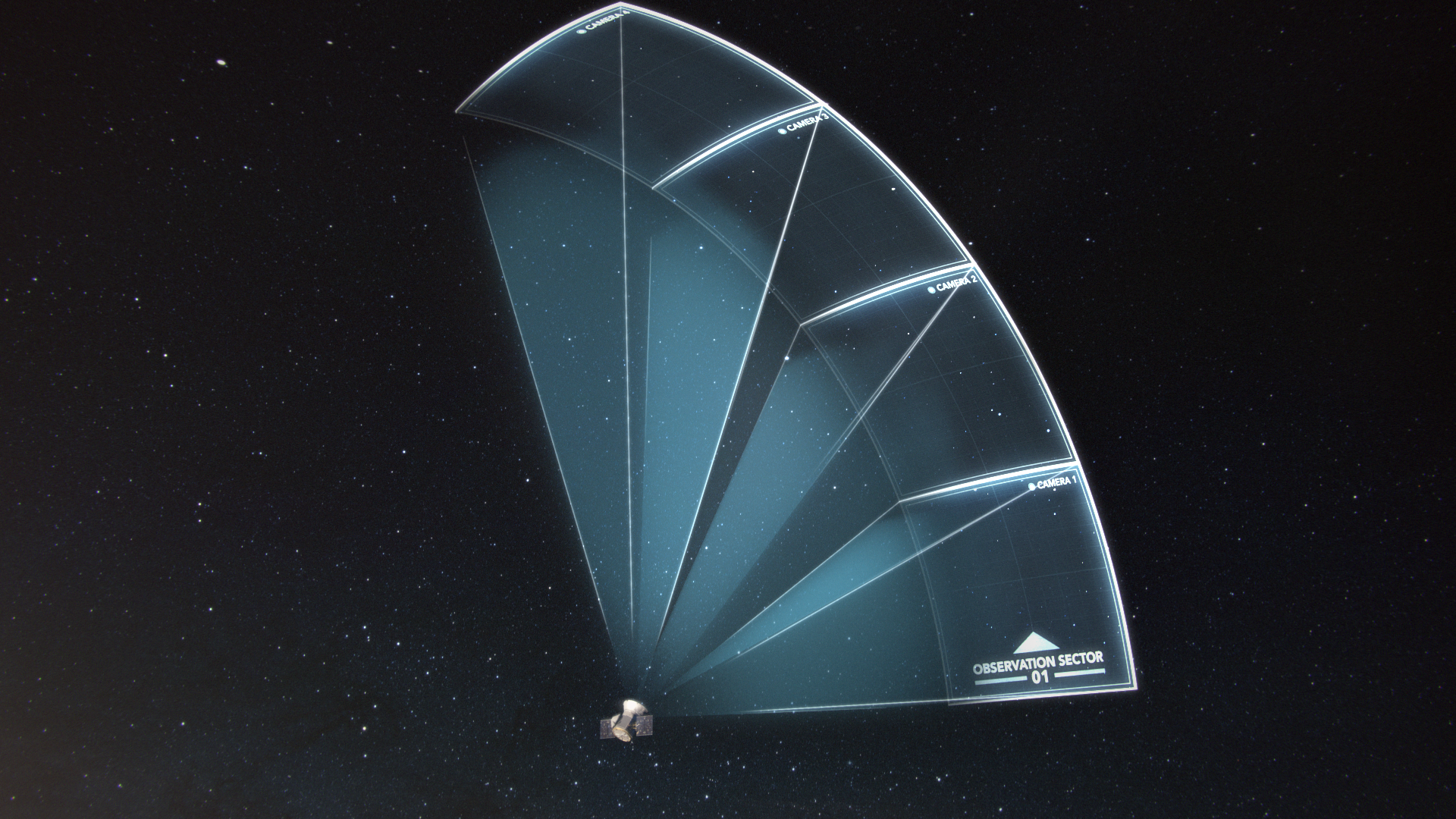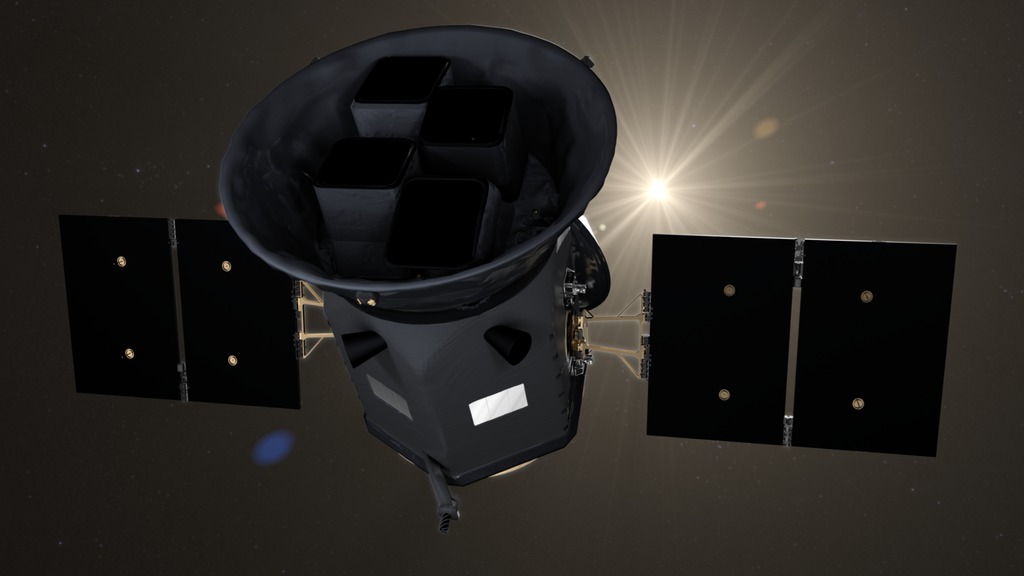TESS-Kepler Field-of-View Animation
This animation compares the fields-of-view of NASA's Kepler telescope and Transiting Exoplanet Survey Satellite (TESS). It begins with Kepler's first observation zone and the constellation Cygnus. It adds a single TESS camera field for comparison and then pulls back to show all four TESS camera fields, called an observation sector, and the amount of sky they cover. The sphere of the sky unwraps into a flat projection, and all the regions observed by Kepler appear. TESS's full two-year coverage appears in the proper sequence, starting in the southern hemisphere and ending in the northern hemisphere. This updated version has sectors 14-16 shifted upward to match TESS's new observing strategy. Finally, the map is rewrapped into a sphere.
Credit: NASA/JPL-Caltech/T. Pyle, J. Vargas (IPAC)
This animation shows only the coverage of TESS. TESS's full two-year coverage appears in the proper sequence, starting in the southern hemisphere and ending in the northern hemisphere. This updated version has sectors 14-16 shifted upward to match TESS's new observing strategy. Finally, the map is rewrapped into a sphere. This version has no Kepler fields.
Credit: NASA/JPL-Caltech/T. Pyle, J. Vargas (IPAC)
This animation compares the fields-of-view of NASA's Kepler telescope and Transiting Exoplanet Survey Satellite (TESS). It begins with Kepler's first observation zone and the constellation Cygnus. It adds a single TESS camera field for comparison and then pulls back to show all four TESS camera fields, called an observation sector, and the amount of sky they cover. The sphere of the sky unwraps into a flat projection, and all the regions observed by Kepler appear. TESS's full two-year coverage appears in the proper sequence, starting in the southern hemisphere and ending in the northern hemisphere. This updated version has sectors 14-16 shifted upward to match TESS's new observing strategy. Next, all 13 of the actual southern hemisphere sector images appear and fall into place in sequence. Finally, the map is rewrapped into a sphere.
Credit: NASA/JPL-Caltech/T. Pyle, J. Vargas (IPAC)
This animation shows only the coverage of TESS. TESS's full two-year coverage appears in the proper sequence, starting in the southern hemisphere and ending in the northern hemisphere. This updated version has sectors 14-16 shifted upward to match TESS's new observing strategy. Next, all 13 of the actual southern hemisphere sector images appear and fall into place in sequence.Finally, the map is rewrapped into a sphere. This version has no Kepler fields.
Credit: NASA/JPL-Caltech/T. Pyle, J. Vargas (IPAC)
Original Version. This animation compares the fields-of-view of NASA's Kepler telescope and Transiting Exoplanet Survey Satellite (TESS). It begins with Kepler's first observation zone and the constellation Cygnus. It adds a single TESS camera field for comparison and then pulls back to show all four TESS camera fields, called an observation sector, and the amount of sky they cover. The sphere of the sky unwraps into a flat projection, and all the regions observed by Kepler appear. TESS's full two-year coverage appears, starting in the southern hemisphere and ending in the northern hemisphere. Finally, the map is rewrapped into a sphere.
Credit: NASA/JPL-Caltech/T. Pyle (IPAC)
Credits
Please give credit for this item to:
NASA/JPL-Caltech/IPAC. However, individual items should be credited as indicated above.
-
Producer
- Scott Wiessinger (USRA)
-
Animator
- Tim Pyle (IPAC-Caltech)
Missions
This page is related to the following missions:Series
This page can be found in the following series:Release date
This page was originally published on Wednesday, March 28, 2018.
This page was last updated on Wednesday, May 3, 2023 at 1:46 PM EDT.

